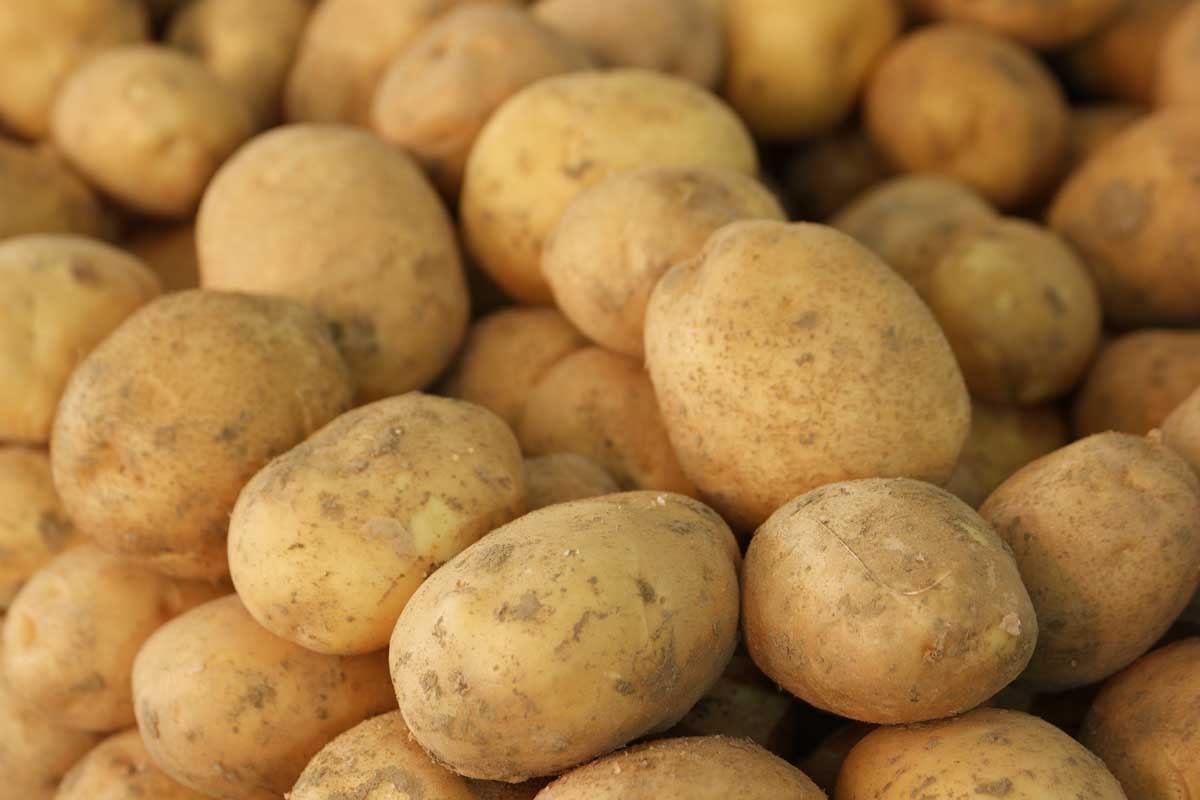
Kennebec potatoes are a staple in many kitchens, but how much do you really know about them? These versatile tubers boast a rich history and unique characteristics that make them stand out. Originating in the United States, Kennebec potatoes have been a favorite among farmers and chefs alike. Their creamy texture and robust flavor make them perfect for a variety of dishes, from crispy fries to hearty stews. But what sets them apart from other potato varieties? Is it their disease resistance, their high yield, or perhaps their adaptability to different climates? Let's dig into 20 intriguing facts about Kennebec potatoes that will leave you appreciating this humble vegetable even more.
Key Takeaways:
- Kennebec potatoes are versatile and delicious, perfect for mashed potatoes, French fries, baking, roasting, and soups. They are also rich in vitamins, minerals, fiber, and antioxidants, making them a healthy addition to your diet.
- Originating in the United States, Kennebec potatoes have a mild, nutty flavor and fluffy texture when cooked. They thrive in cool climates with well-drained soil, and are ready for harvest in late summer or early fall.
What is a Kennebec Potato?
The Kennebec potato is a popular variety known for its versatility and delicious taste. It's a favorite among chefs and home cooks alike. Let's dive into some fascinating facts about this amazing tuber.
-
Origin: The Kennebec potato was developed in the United States in the early 1940s. It was named after the Kennebec River in Maine.
-
Appearance: This potato has a smooth, thin skin that is light tan in color. Its flesh is white and firm.
-
Size: Kennebec potatoes are medium to large in size, making them perfect for various culinary uses.
-
Texture: When cooked, they have a fluffy texture, which makes them ideal for mashed potatoes and baked dishes.
-
Flavor: The flavor is mild and slightly nutty, which pairs well with many different ingredients.
Growing Conditions
Kennebec potatoes thrive under specific conditions. Understanding these can help you grow your own or appreciate the effort that goes into cultivating them.
-
Climate: They grow best in cool climates with well-drained soil. They need plenty of sunlight but also require consistent moisture.
-
Planting Time: Typically planted in early spring, they need about 90 to 100 days to mature.
-
Soil Requirements: These potatoes prefer loamy soil rich in organic matter. The pH level should be between 5.0 and 6.5.
-
Spacing: When planting, space the seeds about 12 inches apart to allow room for growth.
-
Harvesting: Harvesting usually occurs in late summer or early fall. The potatoes are ready when the vines start to die back.
Culinary Uses
Kennebec potatoes are incredibly versatile in the kitchen. Here are some ways you can use them.
-
Mashed Potatoes: Their fluffy texture makes them perfect for creamy mashed potatoes.
-
French Fries: They hold their shape well when fried, making them ideal for crispy French fries.
-
Baking: These potatoes bake beautifully, with a crispy skin and soft interior.
-
Roasting: They roast well, absorbing flavors from herbs and spices.
-
Soups and Stews: Their firm texture holds up well in soups and stews, adding a hearty element to the dish.
Nutritional Benefits
Kennebec potatoes are not just tasty; they are also packed with nutrients.
-
Vitamins: They are a good source of vitamins C and B6, which are essential for immune function and metabolism.
-
Minerals: These potatoes contain important minerals like potassium and magnesium, which help maintain healthy blood pressure and muscle function.
-
Fiber: They provide dietary fiber, which aids in digestion and helps keep you feeling full.
-
Antioxidants: The skin contains antioxidants that help protect your cells from damage.
-
Low in Fat: Kennebec potatoes are naturally low in fat, making them a healthy addition to your diet.
The Final Bite
Kennebec potatoes are more than just a staple in kitchens; they're a versatile, tasty, and nutritious addition to any meal. From their origins in Maine to their widespread popularity, these spuds have proven their worth. Whether you're frying, baking, or mashing, Kennebecs deliver consistent quality and flavor.
Their high starch content makes them perfect for crispy fries and fluffy mashed potatoes. Plus, they're packed with vitamins and minerals, making them a healthy choice. Farmers love them for their resilience and high yield, while chefs appreciate their adaptability in various dishes.
So next time you're at the market, grab some Kennebec potatoes. You'll not only enjoy their taste but also their rich history and nutritional benefits. Happy cooking!
Frequently Asked Questions
Was this page helpful?
Our commitment to delivering trustworthy and engaging content is at the heart of what we do. Each fact on our site is contributed by real users like you, bringing a wealth of diverse insights and information. To ensure the highest standards of accuracy and reliability, our dedicated editors meticulously review each submission. This process guarantees that the facts we share are not only fascinating but also credible. Trust in our commitment to quality and authenticity as you explore and learn with us.


